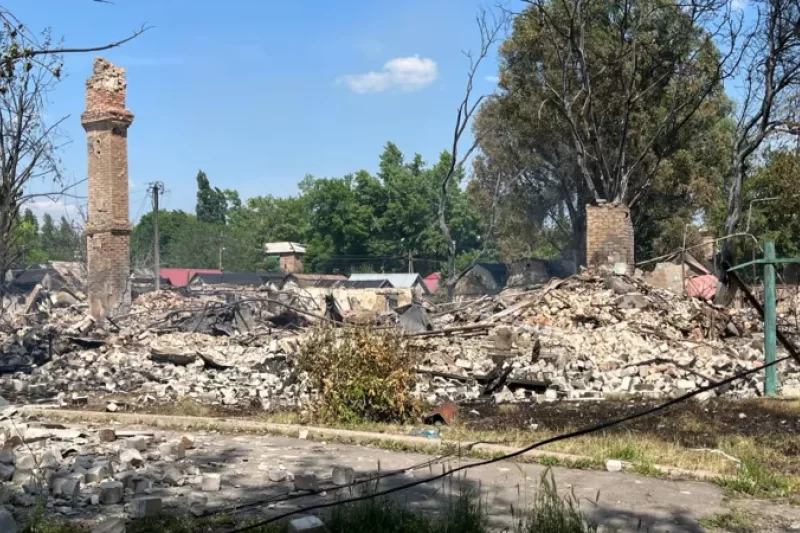The Terrifying New Weapon Changing the War in Ukraine
An acrid smell hangs over the town of Rodynske. A couple of minutes after we drive into the city we see where it's coming from.
A 250kg glide bomb has ripped through the town's main administrative building, and taken down three residential blocks. We're visiting a day after the bomb struck, but parts of the wreckage are still smoking. From the edges of the town we hear the sound of artillery fire, and of gunshots – Ukrainian soldiers shooting down drones.
Rodynske is about 15km (9 miles) north of the embattled city of Pokrovsk. Russia has been trying to capture it from the south since the autumn of last year, but Ukrainian forces have so far managed to stop Russian soldiers from marching in.
So Russia has changed tactics, moving instead to encircle the city, cutting off supply routes.
In the past two weeks, as hectic diplomatic efforts to bring about a ceasefire in Ukraine have failed, Russia has intensified its push, making its most significant advances since January.
We find proof of that in Rodynske.
Within minutes of us arriving in town, we hear a Russian drone above us. Our team runs to the closest cover available – a tree.
We press up against it so the drone won't see us. Then there's the sound of a loud explosion – it's a second drone making impact nearby. The drone above us is still hovering. For a few more minutes, we hear the terrifying whirring sound of what's become the deadliest weapon of this war.
When we can't hear it any more we take the chance to run to hard cover in an abandoned building 100ft away.
From the shelter, we hear the drone again. It's possible it returned after seeing our movement.
That Rodynske is being swarmed by Russian drones is evidence that the attacks are coming from positions much closer than known Russian positions to the south of Pokrovsk. They were most likely coming from newly captured territory on a key road running from the east of Pokrovsk to Kostyantynivka.
After half an hour of waiting in the shelter, when we can't hear the drone anymore, we move quickly to our car parked under tree cover, and speed out of Rodynske. By the side of the highway we see smoke billowing and something burning – it's most likely a downed drone.
We drive to Bilytske, further away from the frontline. We see a row of houses destroyed by a missile strike overnight. One of them was Svitlana's home.
"It's getting worse and worse. Earlier, we could hear distant explosions, they were far away. But now our town is getting targeted – we're experiencing it ourselves," says the 61-year-old, as she picks up a few belongings from the wreckage of her home. Luckily Svitlana wasn't at home when the attack occurred.
"Go into the centre of the town, you'll see so much that is destroyed there. And the bakery and zoo have been destroyed too," she says.
At a safehouse just out of reach of drones, we meet soldiers of the artillery unit of the 5th Assault Brigade.
"You can feel the intensity of Russian assaults increasing. Rockets, mortars, drones, they're using everything they have to cut off supply routes going into the city," says Serhii.
His unit has been waiting for three days to deploy to their positions, waiting for cloud cover or high-speed winds to give them protection from drones.
(Source: BBC)













